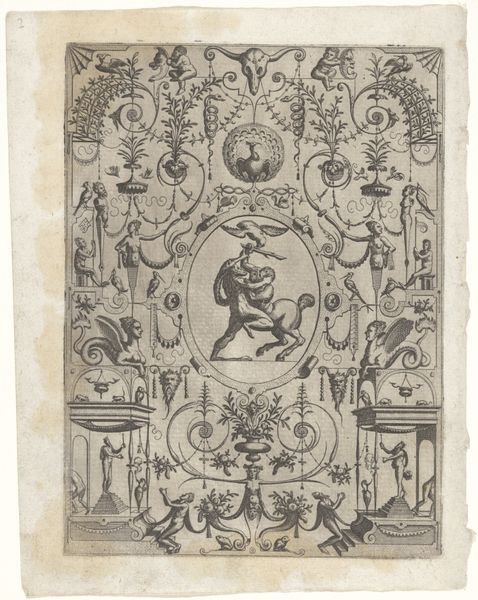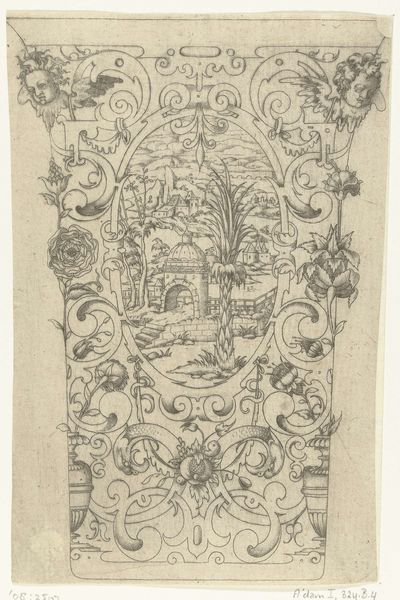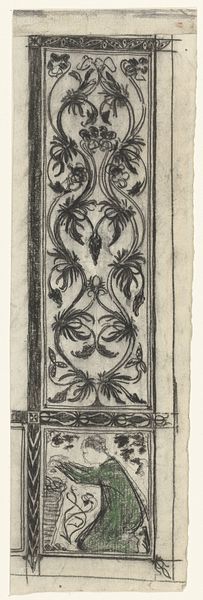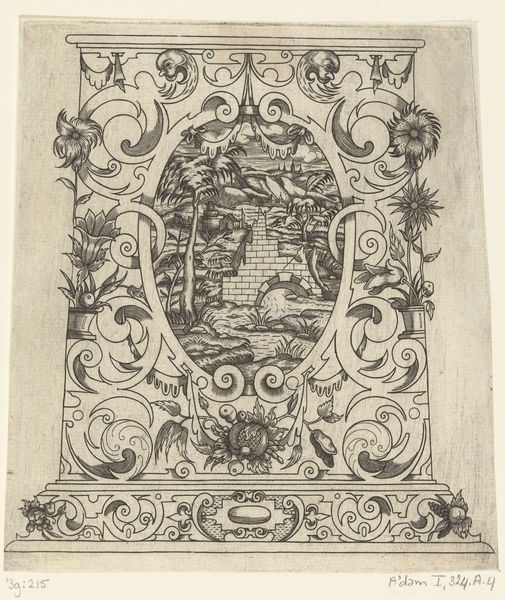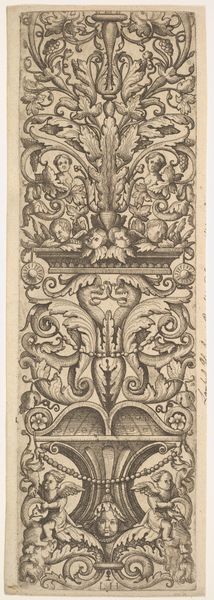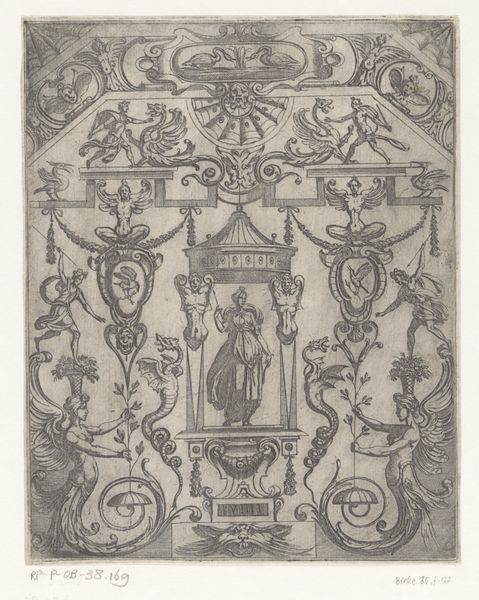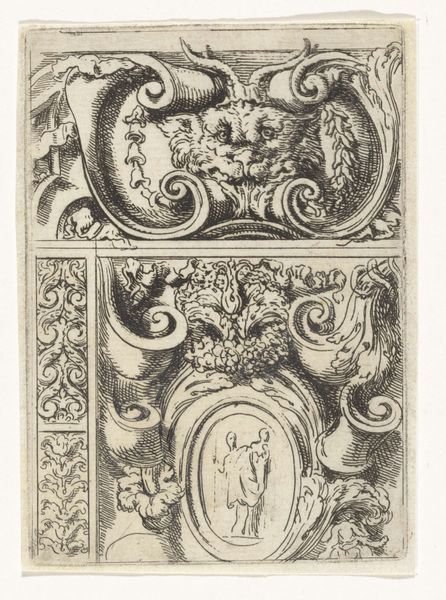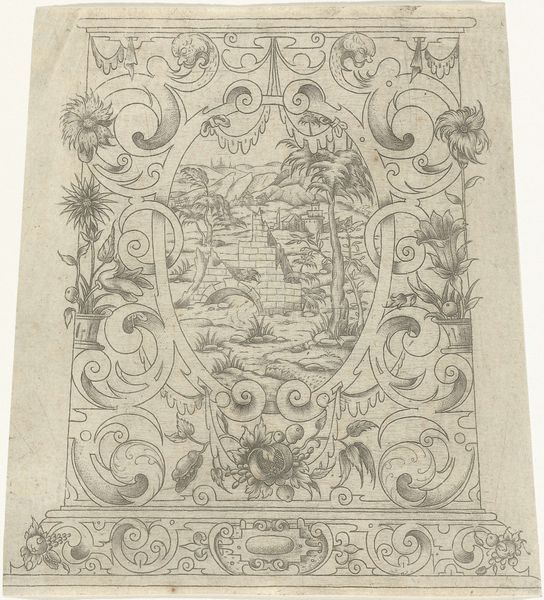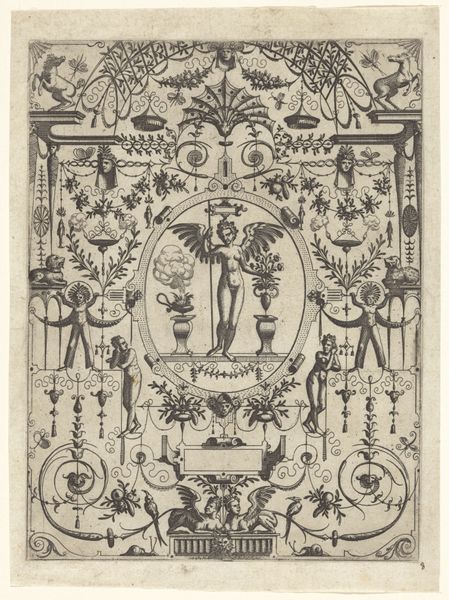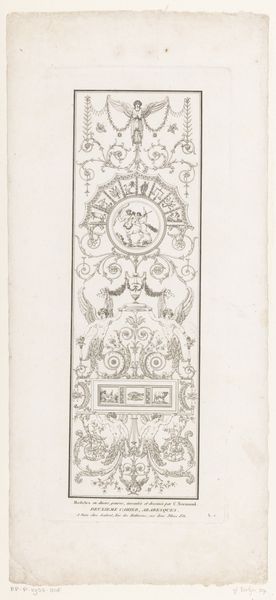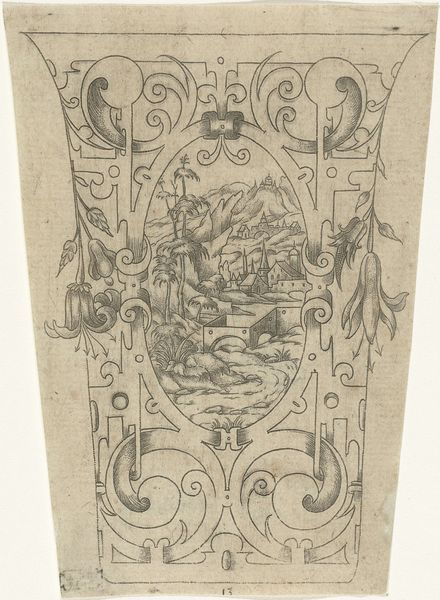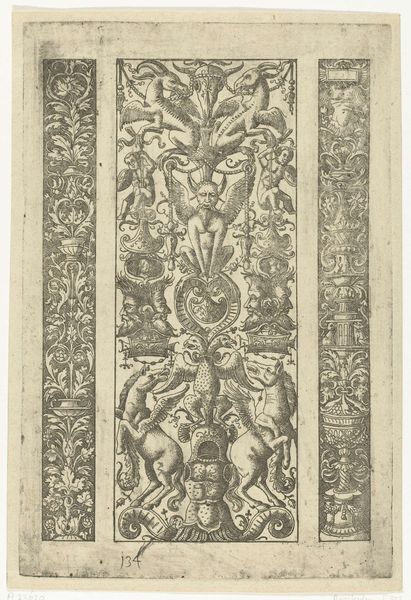
print, engraving
#
pen drawing
# print
#
landscape
#
form
#
geometric
#
line
#
northern-renaissance
#
engraving
Dimensions: height 158 mm, width 76 mm, width 103 mm
Copyright: Rijks Museum: Open Domain
Curator: Well, here we have an engraving, an intriguing print titled "Bierkruik met deksel," which translates to "Beer Jug with Lid." It comes to us from somewhere between 1594 and 1635. You can find it here at the Rijksmuseum. Editor: It’s rather elaborate! My first impression is of controlled chaos, or maybe ornamented simplicity. A landscape scene tucked inside such a geometric form seems like a contradiction, but it intrigues. What function would something like this serve? Curator: Prints of this era had a vital role in disseminating imagery and information, particularly about new designs and patterns for artisans and craftspeople. Given the detail and complexity, and bearing the features that make it suitable for transferring designs for metalwork or pottery, this likely served as a template for skilled makers. Editor: So, less art for art’s sake, more art for practical production? Thinking about the labor involved, it must have been incredibly painstaking work to create such a detailed engraving. Imagine the time and skill involved! Curator: Absolutely. And think about how these images, in turn, shaped cultural tastes and consumption patterns. The proliferation of prints led to greater accessibility of fashionable designs to a wider public, and of course this democratizing process shifted and complicated existing social hierarchies, by making items affordable to a middle class, that previously may only have been available to the aristocratic classes. Editor: You are right! What is especially captivating is the central image, the natural scene that disrupts the overall rigid design. The little cherub on top further contributes to the disruption... the natural elements give a contrasting and more ethereal mood. It is the most fascinating aspect for me, disrupting the form in which it sits! Curator: Exactly. It plays into this tension between natural and artificial, that you rightly pointed out. As art historians we tend to analyze form and function separately, which does sometimes mean overlooking some crucial intersection of art's function, versus it's intrinsic symbolism as art. Editor: Thinking about prints, they offered more accessible visual language in the everyday life of people during that time. This engraving here, offers more than merely "template," but offers new dialogues with imagery... Curator: Precisely, that is wonderfully put. Thank you! Editor: Thank you too. This has opened up some very rich discussions!
Comments
No comments
Be the first to comment and join the conversation on the ultimate creative platform.

